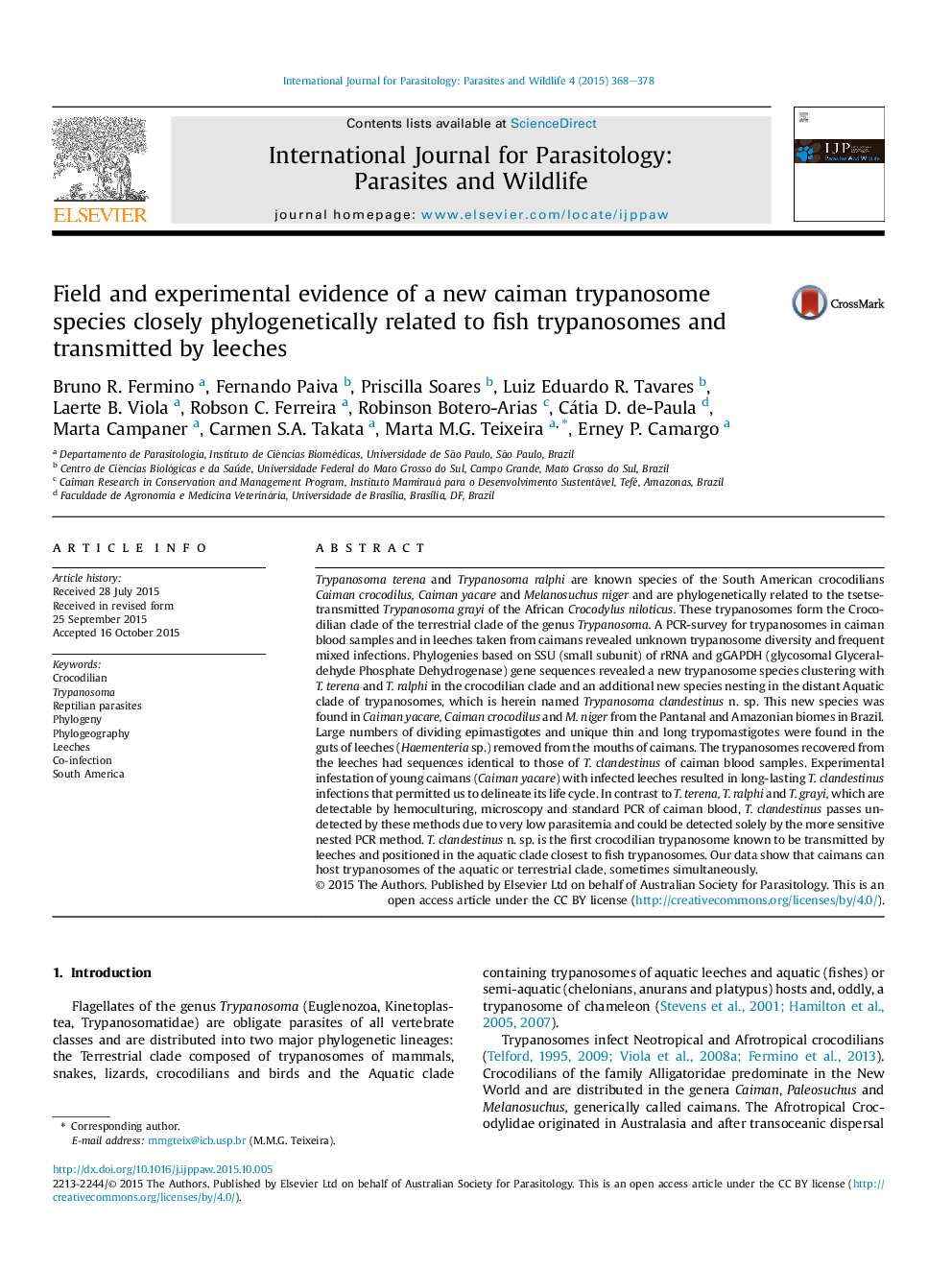| کد مقاله | کد نشریه | سال انتشار | مقاله انگلیسی | نسخه تمام متن |
|---|---|---|---|---|
| 2055196 | 1075733 | 2015 | 11 صفحه PDF | دانلود رایگان |
• Species richness and geographical range of caiman trypanosomes.
• Trypanosoma clandestinus n. sp. is transmitted by leeches.
• T. clandestinus nests in the Aquatic clade closest to fish trypanosomes.
• Caimans were infected by the bite of leeches carrying T. clandestinus.
Trypanosoma terena and Trypanosoma ralphi are known species of the South American crocodilians Caiman crocodilus, Caiman yacare and Melanosuchus niger and are phylogenetically related to the tsetse-transmitted Trypanosoma grayi of the African Crocodylus niloticus. These trypanosomes form the Crocodilian clade of the terrestrial clade of the genus Trypanosoma. A PCR-survey for trypanosomes in caiman blood samples and in leeches taken from caimans revealed unknown trypanosome diversity and frequent mixed infections. Phylogenies based on SSU (small subunit) of rRNA and gGAPDH (glycosomal Glyceraldehyde Phosphate Dehydrogenase) gene sequences revealed a new trypanosome species clustering with T. terena and T. ralphi in the crocodilian clade and an additional new species nesting in the distant Aquatic clade of trypanosomes, which is herein named Trypanosoma clandestinus n. sp. This new species was found in Caiman yacare, Caiman crocodilus and M. niger from the Pantanal and Amazonian biomes in Brazil. Large numbers of dividing epimastigotes and unique thin and long trypomastigotes were found in the guts of leeches (Haementeria sp.) removed from the mouths of caimans. The trypanosomes recovered from the leeches had sequences identical to those of T. clandestinus of caiman blood samples. Experimental infestation of young caimans (Caiman yacare) with infected leeches resulted in long-lasting T. clandestinus infections that permitted us to delineate its life cycle. In contrast to T. terena, T. ralphi and T. grayi, which are detectable by hemoculturing, microscopy and standard PCR of caiman blood, T. clandestinus passes undetected by these methods due to very low parasitemia and could be detected solely by the more sensitive nested PCR method. T. clandestinus n. sp. is the first crocodilian trypanosome known to be transmitted by leeches and positioned in the aquatic clade closest to fish trypanosomes. Our data show that caimans can host trypanosomes of the aquatic or terrestrial clade, sometimes simultaneously.
Figure optionsDownload as PowerPoint slide
Journal: International Journal for Parasitology: Parasites and Wildlife - Volume 4, Issue 3, December 2015, Pages 368–378
